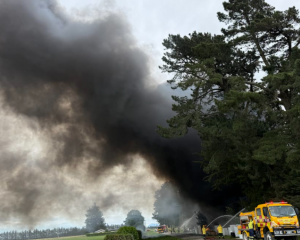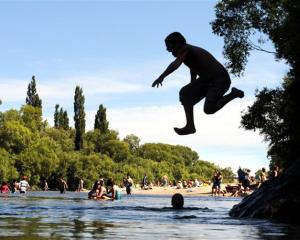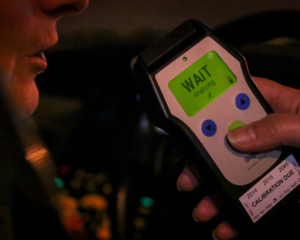The Cincinnati Zoo and Botanical Garden (CZBG) is involved with a kea breeding conservation programme and kea research, in association with New Zealand's Kea Conservation Trust. Yvonne O'Hara talked to the zoo's avian trainer Jackie Bray about the programme, its interactive kea display and its involvement in research in New Zealand.
Q: Why would an American zoo want to be involved with a New Zealand project?
A: The mission and vision of the Cincinnati Zoo and Botanical Garden is dedicated to creating adventure, conveying knowledge, conserving nature, and serving the community. The zoo's commitment to wildlife conservation is part of the organisation's DNA. More than 1.2 million people visit the Cincinnati Zoo annually. This provides a powerful opportunity to reach large numbers of people with conservation messaging, as well as opportunities for guests to partner with the zoo to support in-situ conservation programmes. In addition, the zoo cares for 15 of the 40 kea in AZA-accredited zoos, (Association of Zoos and Aquariums) the largest collection of kea in North America and one of the largest collections in the world. Lastly, the international community has great interest in kea because of their unique ecology, amazing intelligence and charismatic personalities. There are no other avian species on Earth like kea. They are a wildlife gem and their loss would be tragic.
Q: How successful has the interactive kea exhibit including been? What sort of response have you had from zoo visitors?
A: The new kea exhibit has been popular with zoo visitors and enriching for the birds. The large viewing window is made of Ornilux bird-safe glass. The glass contains a UV-reflective coating, which is visible to the birds but appears clear to people. This gives visitors an up-close view of the birds but prevents the birds from accidentally flying into the glass. The exhibit also contains an interactive puzzle that encourages visitors to donate coins for kea conservation and interact with the birds as they help move the coins through the puzzle. The exhibit is especially popular during the colder months of the year, because the kea are comfortable in the outdoor exhibit year around. Visitors also have the ability to enter the walk-through aviary and interact directly with the birds at certain times under the supervision of a keeper/trainer. Several of the birds are trained to take dollar bills from guests and place them into a collection box. The birds are also trained to take cell phones. The money raised during the Kea Encounter, in the interactive puzzle and from cell phone recycling supports the zoo's in-situ conservation initiatives.
Q: Can you explain about the breeding programme and how successful it has been? How big a population do you wish for and are the birds to be sent to other zoos? Was getting the birds to breed easy or hard and were there specific requirements that needed to be addressed?
A: Our breeding programme has been very successful, especially this past year with the arrival of six chicks. Historically, kea breeding has been a challenge in North American zoos. The Cincinnati Zoo participates in the Association of Zoos and Aquariums (AZA) Kea Species Survival Plan programme (SSP), which makes transfer recommendations to ensure a healthy, sustainable population long term. It is likely that birds will be eventually transferred to other facilities to preserve as much genetic diversity as possible in the population. The Kea SSP is re-evaluated regularly to take into consideration changes in the population. Currently, all AZA institutions holding genetically compatible kea pairs are being encouraged to breed their birds. Getting kea to produce viable offspring has traditionally been a challenge. Our husbandry and breeding programme strives to mimic the kea's natural environment as closely as possible. Cincinnati has a climate similar to the South Island of New Zealand. The exhibit is large enough for breeding pairs to defend their nesting area without interfering with the territory of other pairs. We artificially incubate some of the eggs and allow the birds to incubate the rest, to maximise opportunities for successful hatching. We also have a comprehensive training programme where we use positive reinforcement to train the birds to interact safely with the public and to perform routine husbandry tasks. These tasks include stepping up on a scale, entering a travel crate, touching body parts to a target and taking liquids from a syringe. By training the birds to voluntarily participate in husbandry tasks, it makes these tasks stress-free and actually enjoyable for the birds.
Q: What sort of research projects are you carrying out on kea at the zoo?
A: We routinely conduct observational studies to ensure that we are managing the flock in optimum conditions. Some of the information we record on a daily basis includes physical appearance, diet, moulting, and any notable behaviour such as breeding, nesting, egg laying, vocalisations, and social interactions between individuals. The zoo's Lindner Center for Conservation and Research of Endangered Wildlife (CREW) is currently investigating whether fecal hormone analysis alongside behavioural observation could provide information useful to maintaining the health of the flock. If an increase in stress hormones is detected in the flock, it may be possible to intervene before the stress leads to medical problems. The research is completely non-invasive.
Q: The zoo was a funder of the Kea Conservation Trust's (KCT) kea repellent research, and it is also providing money for a community conflicts response co-ordinator. It has signed a memorandum of understanding (MOU) with the trust for the next three years. Can you please tell me how much the funding was for, what projects does it to go towards and what other trust projects have you been involved in in the past?
A: To date, the Cincinnati Zoo and Botanical Garden staff has secured more than $US60,000 (about $NZ76,000) to support in-situ kea conservation projects conducted by the Kea Conservation Trust.
Q: What benefits would all three parties - the trust, the zoo and the kea - gain from the relationship?
A: The KCT gains financial support for in-situ conservation programmes and international exposure highlighting their responsible and effective use of funds.
The zoo increases our in-situ conservation impact and gains knowledge of best husbandry practices by collaborating with other professionals dedicated to the care of this unique species.
The birds benefit from the effective conservation initiatives conducted by the KCT and increasing international awareness and support for their conservation.
Q: Zoo staff were planning to come to New Zealand in the next year or two to be involved with some of the projects. Which projects were you considering and when is that likely to be?
A: During the first year of the MOU agreement dated September 2, 2014, CZBG is providing funding for KCT staff to attend the Human-Wildlife Conflict Collaboration Workshop. During the second and third year of the agreement, CZBG would like to explore the potential of having CZBG staff/representatives travel to New Zealand for the purposes of participating in the KCT's wild kea conservation work. We are still working out the details regarding zoo staff travelling to New Zealand.
Our goal is to be of service to the Kea Conservation Trust and provide professional support in whatever capacity it needs. The first-hand experience we gain while in New Zealand will be priceless to us, as we continue to raise awareness and funds to expand our partnership with the KCT once we return home.











